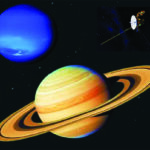Home »

Leonid peaks tonight followed by partial lunar eclipse tomorrow
By Rick Nowell
The Leonid Meteor shower peaks tonight (Nov. 17), followed by a Lunar eclipse November 18 at 11 p.m.
The partial lunar eclipse begins Thursday, Nov. 18 at 11 p.m. when the Moon moves into the fuzzy edge of the Earth’s shadow. The Moon will slowly move from west to the east through the Earth’s shadow cone, moving to the left in its orbit. You will see the circular edge of the Earth’s shadow move slowly left along the face of the Moon.
At 12:18 a.m., it should move into the darker edge of Earth’s shadow. At 2:02 a.m., it will reach the centre of the umbra shadow, the darkest part. Ninety-seven per cent of the full Moon will be dark. While it’s there, use binoculars and look for tiny pinprick flashes of light from the Leonid meteor shower. The partial eclipse will end at 3:47 a.m.
The umbra is the dark central shadow cone cast by the Earth, about 2.5 times the size of the Moon. The penumbra is the half shadow ring that surrounds the central cone, about the size of the Moon. And at the centre of the umbra, the Earth’s atmosphere layer casts a red glow, like a sunset. The atmosphere absorbs or scatters the other colours, and mainly red passes through.
The Leonid Meteor Shower: This shower occurs between Nov 6 and Nov 30, peaking on Nov. 16 and early morning Wednesday Nov. 17 (max at 2:30 a.m.). Usually this meteor shower is pretty nice to watch with dust trains and outbursts, but this year it may be disappointing due to the full moon, and there is no dust trains predicted. These meteors have fairly fast speeds of 71 km/s with fast green trails. This year at peak they should occur at rates of 10 meteors per hour; otherwise expect after peak, just one meteor per hour, They radiate out from the constellation Leo on the Eastern horizon. This is ice and dust that came off comet Tempel-Tuttle. The meteors are a variety of sizes, from silicate dust, ice and sand grains to pea-sized ice-pellets. Occasionally there are a few golf-ball sized chunks. The larger pellets create bright fireballs with glowing green streaks behind them that take a few seconds to fade away. They may break up into pieces.. These meteors never hit the ground, the biggest may make it down to 75km high. This year the bright Moon will make it hard to see the meteors, since it will be nearly full.
 Ionization trails: the word meteoros is Greek for “high in the air” and they are high up at 70 to 120 km altitude where the air is thin. The fast meteor will heat the air into a glowing plasma, ionizing the nitrogen and oxygen gases in the atmosphere. At higher collision speeds oxygen will glow green. Nitrogen glows blue at medium speeds and red at low collision speeds.
Ionization trails: the word meteoros is Greek for “high in the air” and they are high up at 70 to 120 km altitude where the air is thin. The fast meteor will heat the air into a glowing plasma, ionizing the nitrogen and oxygen gases in the atmosphere. At higher collision speeds oxygen will glow green. Nitrogen glows blue at medium speeds and red at low collision speeds.

Thus, fast meteor showers with more energy would produce more blues and greens, slow meteors showers with lower energy, more reds. Most meteors start off blue, and fade to red as they slow down. Sometimes the ionization trail glow persists for a few seconds before fading out. (This is caused by the oxygen gas glowing green for a while in the atmosphere; although it may appear dim white to the eye.)
Sporatic meteors: on any average night you may see ten bright fireballs from random sources. There doesn’t have to be a meteor shower occurring.
Lunar impacts: Leonid meteoroids the size of golf balls or oranges will flash bright enough to see when they hit the Moon. When these hit, a person observing the dark area of the Moon with a telescope will see a brief pinpoint flash of light, perhaps once every four hours. Note that you won’t see the flashes on the brightly lit part of the Moon.
Since the Moon is full, you will be lucky to see one or two flashes during the lunar eclipse.
Photos courtesy Rick Nowell
– Rick Nowell is College of the Rockies’ Physics Lab Tech







